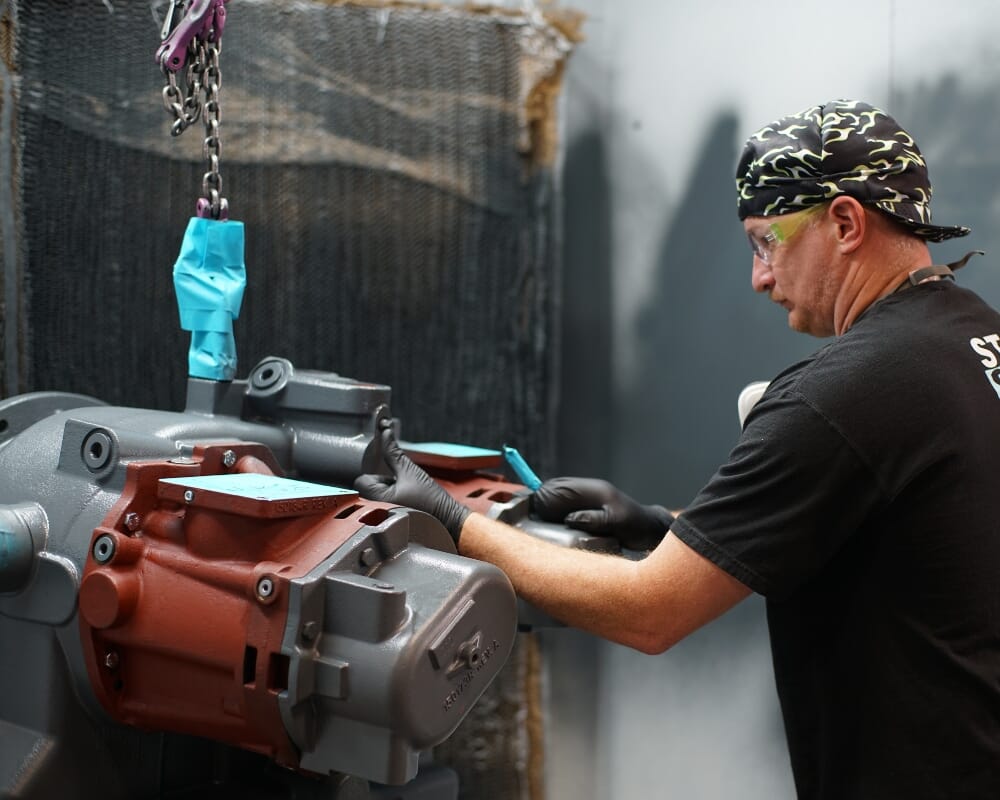
Preserve Your Compressor’s Design Integrity by Using OEM Parts
July 16, 2025
How You Can Turn Your Compressed Air System into a High-Efficiency Profit Center
July 30, 2025Six Low-Cost Fixes for Compressed Air Optimization in Times of Economic Uncertainty
Kaishan USA | July 23, 2025 | Uncategorized
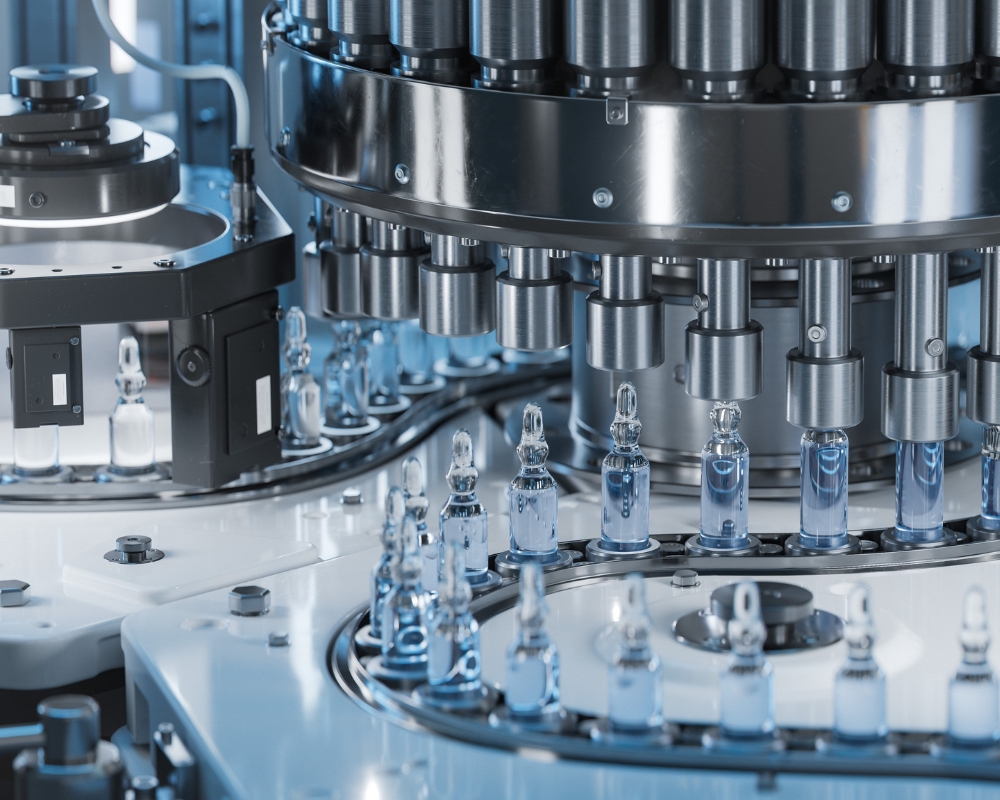
Ensuring that your compressed air system isn’t producing oil pass-through, moisture and pulsations is an essential part of an audit, particularly in applications such a pharmaceutical manufacturing.
The vast majority (70%) of all industrial plants have compressed air systems, according to analyst Markets and Markets. Those systems account for 10% of all electricity and roughly 16% of all motor system energy use in U.S. manufacturing industries, according to the U.S. Department of Energy publication, “Assessment of the Market for Compressed Air Efficiency Services.” Half of those facilities present opportunities for significant energy savings, the report indicates.
Energy savings from system improvements can range from 20%-50% or more of electricity consumption, according to another DOE resource, “Improving Compressed Air System Performance: A Sourcebook for Industry.”
We typically find that your air compressor has the largest motor in your plant. Plus, it’s frequently one of your largest (if not the largest) energy consumer.
As a result, your compressed air system offers many opportunities to save energy and reduce costs. And those savings go right to the bottom line: if your company has net margins of 10%, a savings of even $10,000 would work out the same as $100,000 in additional sales.
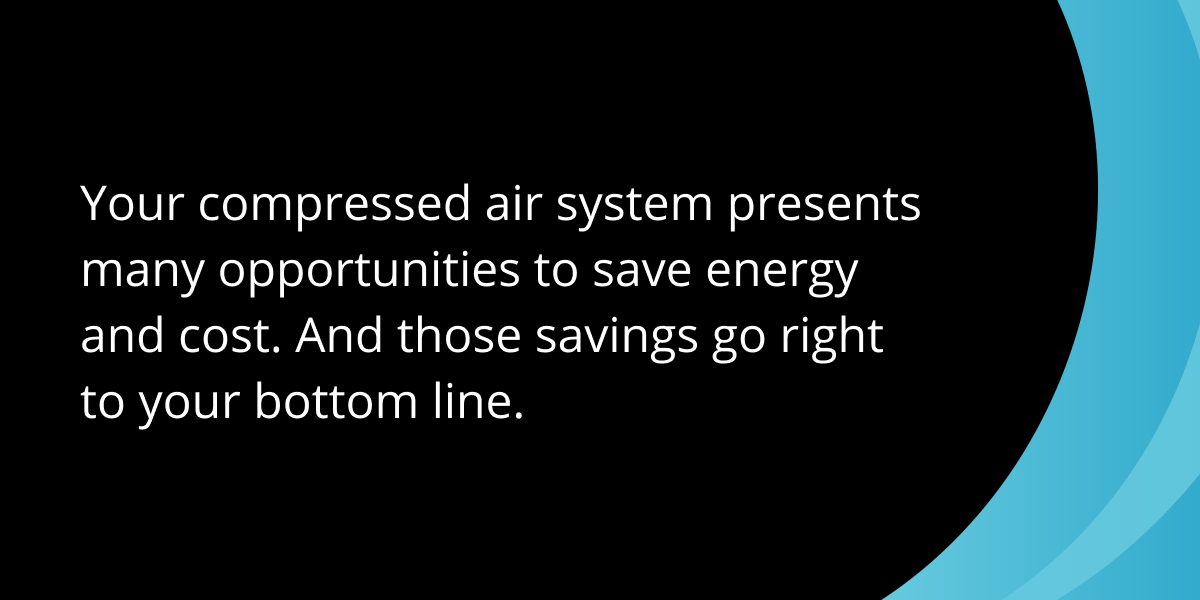
We’ve written many blogs listing ways to save energy with rotary screw compressors, including “Your Gameplan for Optimizing Rotary Screw Air Compressors for Maximum Energy Savings” and “Want to Boost Your Plant’s Energy Efficiency? Start with Your Compressed Air System”. In addition, we also published a white paper, “Leveraging Industrial Air Compressors for Energy Cost Reduction,” about saving energy.
The good news is that there are many ways to optimize your compressed air system with minimal investment—notable advice at any time, but especially during uncertain economic times. We summarize six low-cost ways below, starting with fixing leaks.
1. Fix Leaks
Poorly designed and maintained compressed air systems waste up to $3.2 billion in utility payments in the U.S. annually, according to the Compressed Air & Gas Institute. CAGI further estimates that an eighth-inch leak in a 100-PSIG system will cost at least $3,935 annually. Perhaps more, depending on local utility rates.
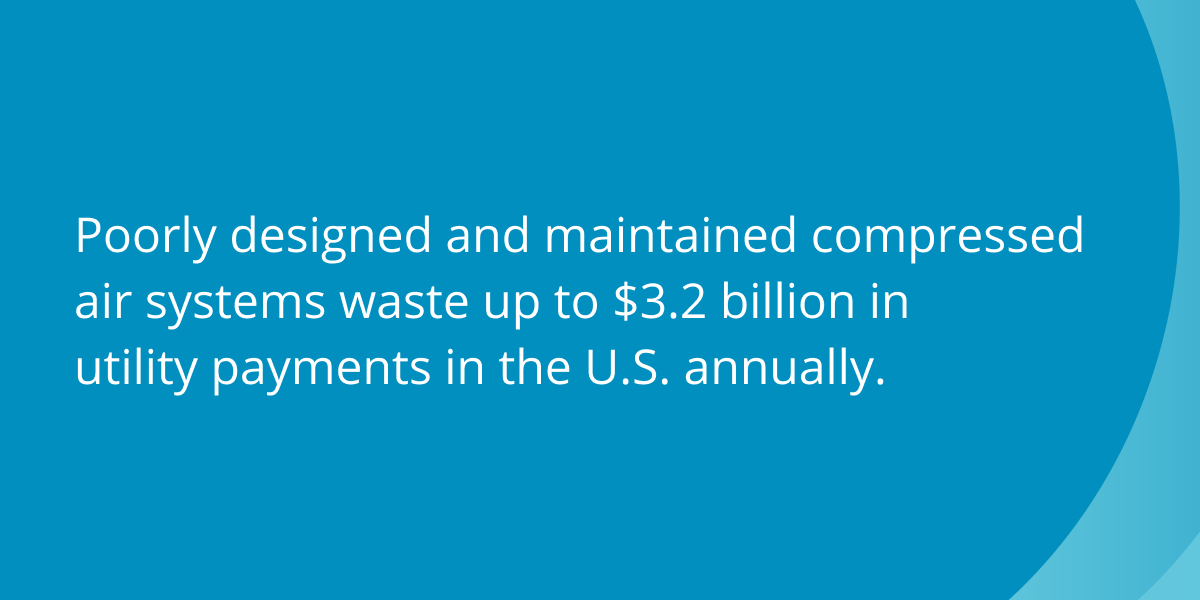
And while it may be impossible to reach a zero-leak state—a leak rate of 20% is probably the most realistic goal—saving the difference could be very significant. As DOE’s Assessment of the Market for Compressed Air Efficiency Services notes, repair of leaks in your air distribution system and end-use tools can reduce system energy use by 10 to 15%.
For more on leaks, read our blog post, “Eight Causes of Compressed Air Leaks and How to Find Them.”
Additionally, you can help reduce the amount of air lost to leaks by lowering your header pressure.
2. Reduce Header Pressure
Many operators set the system pressure to the level required by the tool or tools needing the most pressure. And, we get it, you don’t want complaints.
However, in most cases, those high-pressure applications make up only a fraction of your system’s applications. And that means you are over-pressurizing everything else.
So, a crucial part of operating your compressed air system efficiently is setting the header pressure as low as possible. Compressed Air Best Practices notes that you should reduce the pressure band—the gap between the load and unload pressure—as low as possible without affecting end-use applications.
Start by identifying the high-pressure applications. Then, work to scale back the pressure to your other end uses. The article suggests reducing the pressure by 1 PSIG daily until an end user reports a problem.
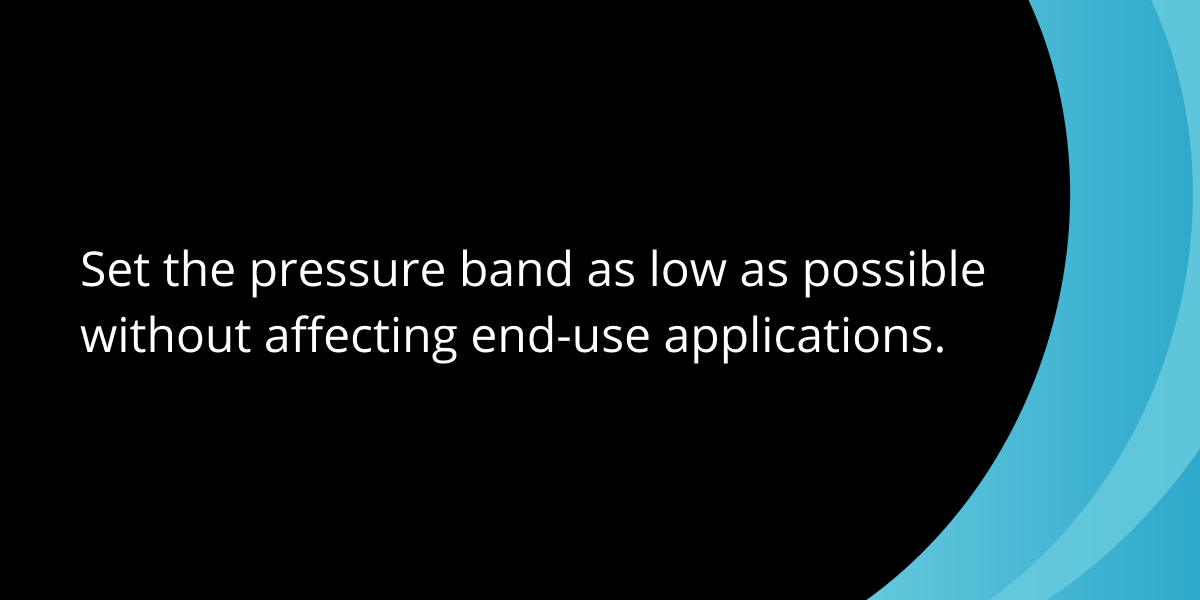
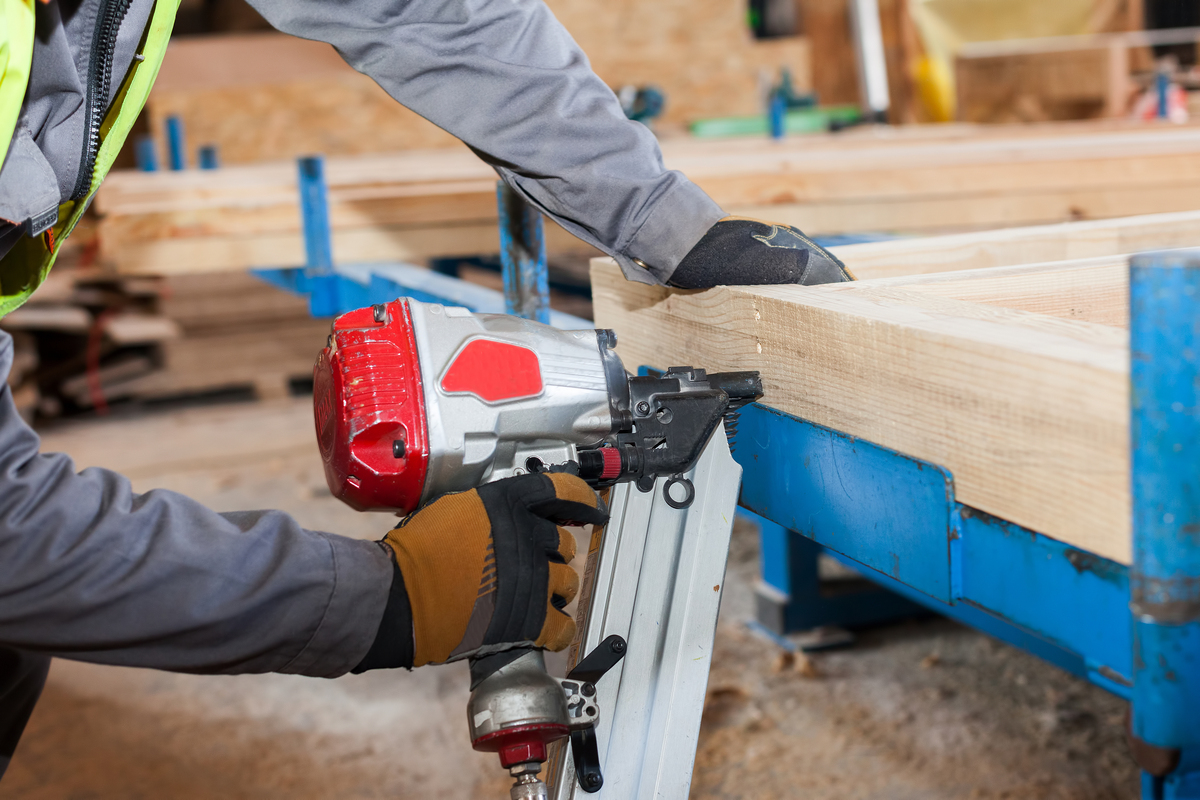
Applications such as framing nailers may require higher pressure than other tools in your compressed air system. As a result, they may require a separate, dedicated compressor.
For a complete discussion of the details of setting your system pressure, visit our blog post, “How Lowering the Pressure Band of Your Compressed Air System Can Save You Money.”
Similarly, you can save a lot of energy and cost by reducing artificial demand.
3. Cut Artificial Demand
When systems are over-pressurized (as mentioned above), the increased pressure causes more leaks (or expands existing ones). That creates more ways for compressed air to escape from your system.
It’s a condition known as “artificial demand,” with higher pressure increasing the flow of air through existing leaks. It’s very costly, and it’s a great incentive to set system pressure at the lowest level needed.
In addition, many companies use compressed air for tasks where it is not cost-effective. Examples include cleaning, dust removal and other non-essential tasks. For more on reducing artificial demand, read our blog post, “Reducing Compressed Air Demand.”
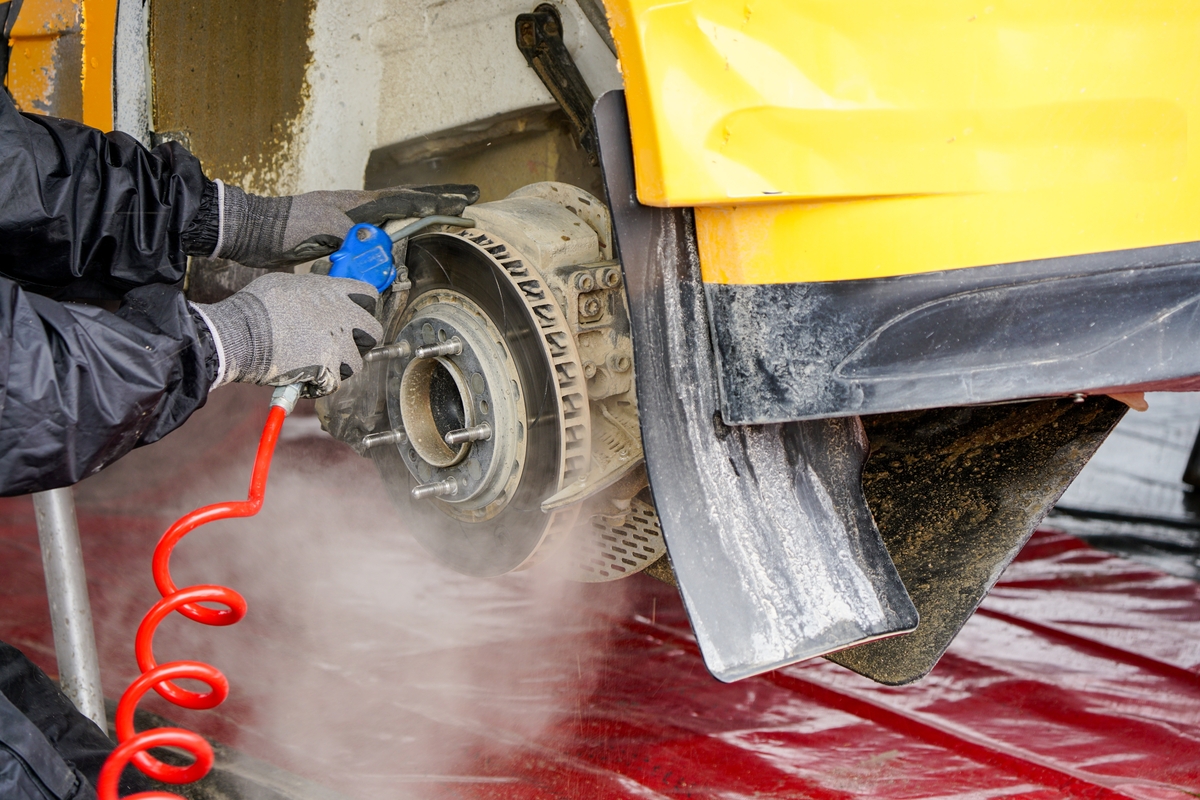
Cleaning and dirt removal is not the most cost-effective use of compressed air.
Automatic valves
Some companies install automatic valves that shut off specific parts of their plants when they are not in use.
That’s especially significant when you’re operating a single eight-hour-per-day shift. If you don’t turn off your compressor at the end of each shift, you’ll feed the leaks in your system, even though you’re not producing anything. Shut down your compressor at the end of the shift, and you’ll save up to 30% in energy cost.
Maintaining your compressed air system is another inexpensive way to reduce energy use and cost.
4. Make Compressed Air System Maintenance a Priority
Properly maintaining your rotary screw compressor can offer many benefits, including the following:
- Uptime. According to a recent survey by Industry Week in collaboration with Emerson, downtime costs industrial manufacturers $50 billion a year globally. Other estimates indicate unplanned downtime costs manufacturing enterprises as much as $9,000 a minute. By performing regular compressed air system maintenance, you’ll keep unplanned downtime to a minimum.
- Energy efficiency. A properly maintained system will deliver significant energy savings. According to various estimates, your compressor’s lifetime energy consumption will be significantly higher than its initial cost. For more on energy efficiency, see our blog post, “Reduce Energy Costs: Four Tips for Plant Managers.”
- Equipment life. A well-maintained compressor will have a long working life and could impact the longevity of the equipment it serves. Good compressed air system maintenance can help you avoid catastrophic failures that could result in significant repair and replacement costs.
- Safety. Properly maintaining rotary screw air compressors will reduce the heat, vibration, pollution and noise impact on your people. And they are less likely to have serious failures that injure workers. For more on safety, see our blog post, “Eight Ways to Improve Air Compressor Safety.”
- Air quality. A well-maintained system will provide higher-quality air, improving the performance and longevity of your downstream tools and applications. For more on maintaining and improving air quality, read our blog post, “How to Deliver the Compressed Air Quality Your End Users Need.”
Industry research has proven that a proactive compressed air system maintenance strategy can help you reduce maintenance costs by as much as 70%.
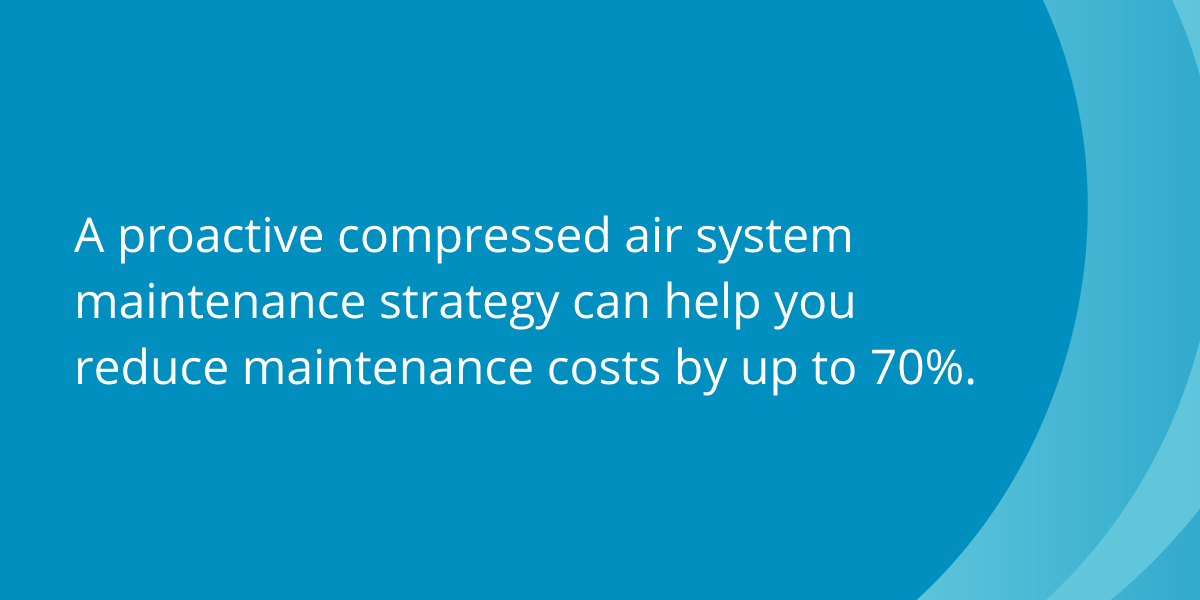
That means paying attention to the basics, such as checking oil and filters at recommended intervals. Doing regular checks during startup. Drawing an oil sample in compliance with warranty requirements. Regularly monitoring compressor data. And engaging your team members in continuous improvement efforts.
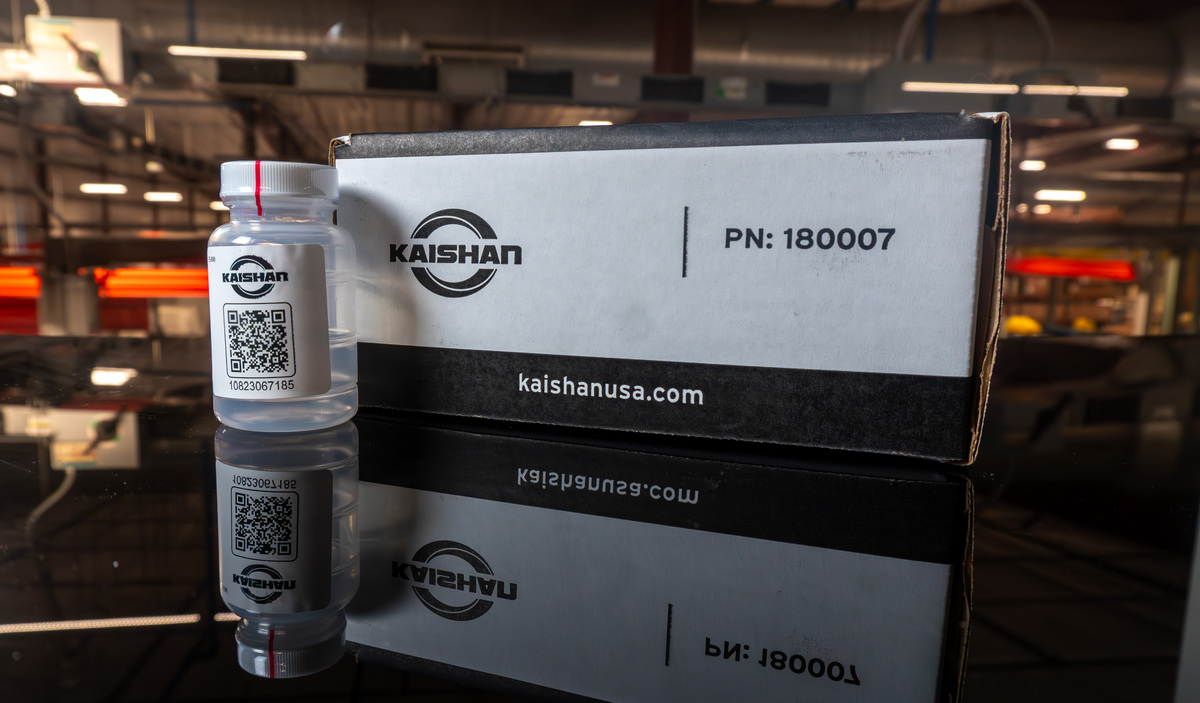
Most air compressor manufacturers, including Kaishan USA, require regular oil sampling to maintain warranty eligibility.
For more information on compressed air system maintenance, read our post, “Ten Need-To-Know Rotary Screw Air Compressor Maintenance Tips.” And for a comprehensive air compressor maintenance checklist, download our white paper, “Air Compressor Maintenance: Ultimate Guide and Checklist.”
Another way to reduce costs and save energy is to recover some of the heat generated during the compression process.
5. Recover Heat
You can also recover wasted heat from the compression process to help heat the plant. According to the DOE publication, “Improving Compressed Air System Performance: A Sourcebook for Industry,” more than 90% of the energy that goes into the air compressor comes out as heat.
That energy can be converted for use in other parts of your enterprise, such as space heating, pre-heating boiler water, water heating or even process heating.
Compressed Air Best Practices says 90% of that heat loss can be recovered, while Manufacturing.net places the figure as high as 96%.
You can find out more about heat recovery in our blog post, “Air Compressor Cooling.”
Most of the issues mentioned above, including repairing leaks, setting header pressure at the correct level, eliminating artificial demand, adopting preventive compressed air system maintenance practices and recovering heat would benefit from the advice of a compressed air professional.
6. Get an Expert to Audit Your Facility
For years, Kaishan USA and our independent distributors have collaborated with customers to conduct facility audits, helping them save time and money, improve reliability and deliver high-quality air.

An audit by a compressed air professional can save time and money, improve reliability, ensure high-quality air, extend equipment lifespan and improve system performance.
An air compressor audit can produce significant benefits for your organization:
- Save time and money. Critical steps in the auditing process include identifying opportunities to cut energy use and leaks, reduce downtime, optimize system operation, establish a comprehensive maintenance program and introduce new technology. All will save time and deliver significant financial benefits.
- Improve reliability. An audit can help you avoid unplanned downtime and loss of production by identifying air compressor problems before they result in a breakdown.
- Ensure higher-quality air. Reducing oil pass-through, moisture and pulsations enhances the quality of the air your system produces. That’s especially important for industries and applications requiring high-quality air, such as painting, healthcare, life sciences and semiconductor.
- Extend equipment lifespan. Anything that makes your system work harder could shorten the useful lives of your compressor, supporting devices and end-use equipment.
- Improve system performance. Making even minor adjustments in pressure or fixing the leaks in your system can significantly improve system performance. And many of those minor issues may not be apparent to your operators.
To find out how your company can benefit, download our white paper, “How An Air Compressor Audit Can Help You Build Competitive Advantage.” And to see some examples showing how audits saved significant amounts in real-life applications, visit our case studies page.
Many of these audits are performed by our nationwide network of independent distributors, who have a deep understanding of industrial applications and know how to cut energy use and cost.
We partner with these independent distributors because they offer expert guidance, faster response times and personalized support tailored to your needs. They don't just sell compressors—they build relationships, ensuring you get the right system, reliable service and quick access to parts when you need them most.
So, when you buy through Kaishan, you're getting more than a product—you're getting a local partner who cares about your business and will work hard to help it succeed. It's the best way to serve you.
Key Takeaways
Energy savings from system improvements can range from 20% to 50% or more of electricity consumption. Low-cost compressed air optimization tactics include:
- Fixing leaks
- Reducing header pressure
- Cutting artificial demand
- Making maintenance a priority
- Recovering heat
- Getting an expert to audit your facility
Let Us Help
Optimizing the operation of your rotary screw air compressor and the applications it serves is an integral part of weathering uncertain economic times. If you need help maximizing the performance of your air compressor and compressed air system, get in touch with the experts at Kaishan. Contact us today.
Listen to the Podcast Version
The Hidden Cost of Leaks and Pressure
Alright, welcome back to The Big Dog Podcast—episode 30! I’m Jason Reed, here with Lisa Saunders, and today we’re talking about something that’s, honestly, draining way too many budgets—inefficiencies in compressed air systems. Lisa, you wanna kick us off?Yeah, let’s get right into it. So, here’s a number that always blows my mind: U.S. plants waste up to $3.2 billion a year—billion with a B—just from leaks in compressed air systems. And, depending on who you ask, leaks can account for, like, 30 to 50 percent of total air loss in a typical plant. That’s not just a little hiss in the background, that’s money flying out the door.
Yeah, and it’s not just the big, obvious leaks either. Sometimes it’s a tiny eighth-inch hole, and that alone can cost a plant almost four grand a year. I mean, you’d never just leave a faucet running in your house, right? But in a lot of plants, that’s basically what’s happening—just with air instead of water.
Exactly. And, you know, I was at this facility in the Midwest—this was, what, last year?—and they were running their system at way higher pressure than they actually needed. We did a quick walk-through, and I asked, “Why are you running at 120 PSI when most of your tools only need 90?” They just shrugged and said, “That’s how we’ve always done it.” So, we dialed it back, and, no joke, their energy bill dropped by thousands within a month. Sometimes it’s that simple.
That’s the thing—people crank up the pressure because they think it’ll solve every problem, but all it really does is make leaks worse and burn more energy. And, like, as we talked about in that episode on duty cycles, you gotta match your system to what you actually need, not just what feels safe or easy.
Right. And fixing leaks and setting the right pressure, that’s always the first step. You can’t optimize anything else until you get those basics under control. It’s not glamorous, but it’s where the real savings start.
Yeah, and honestly, if you’re not checking for leaks and you’re not looking at your pressure settings, you’re just leaving money on the table. It’s like, why even bother with the fancy stuff if you’re missing the basics?
Low-Cost Wins: Maintenance and Smart Usage
So, let’s talk about some of those “fancy” things—or, well, not fancy, but low-cost wins that people overlook. Maintenance is a big one. There’s research out there showing you can cut maintenance costs by up to 70% just by being proactive. That’s not a typo—seventy percent.Yeah, and I see this all the time. I remember this one plant manager—super sharp guy, but he was using compressed air to blow dust off everything, like it was a leaf blower. I had to step in and say, “Look, you’re not just wasting air, you’re making the compressor work overtime and, honestly, it’s not even safe.” Switched him over to a vacuum system for cleaning, and suddenly, their air demand dropped, and the maintenance team was a lot happier. Sometimes you gotta challenge those habits, you know?
Totally. And that’s what they call “artificial demand,” right? Using more air than you actually need, or using it for stuff that doesn’t make sense. It’s like running your car engine just to charge your phone. There are better ways.
Yeah, and don’t forget about automatic valves. If you’re running a single shift and you leave the compressor on overnight, you’re just feeding leaks for no reason. Install some automatic shutoff valves, and you can save up to 30% on energy costs. That’s huge for something so simple.
And, honestly, just sticking to the basics—checking oil, changing filters, doing regular startup checks, drawing oil samples for warranty—those things add up. Not only do you save on energy, but your equipment lasts longer, and you avoid those catastrophic failures that cost a fortune.
Yeah, and it’s not just about saving money, either. It’s about safety, air quality, uptime—all the stuff that keeps a plant running smooth. Like, if you’re not maintaining your system, you’re just waiting for something to go wrong. And when it does, it’s never at a good time.
Exactly. And, you know, we’ve talked before about how maintenance ties into warranty and reliability. It’s all connected. If you want to cut costs, start with the stuff you can control—maintenance and smart usage. The rest gets a lot easier after that.
Beyond the Basics: Heat Recovery and Professional Audits
Alright, so let’s go a little deeper. Once you’ve got leaks, pressure, and maintenance dialed in, there’s still more you can do. Heat recovery is a big one. Most people don’t realize that over 90% of the energy going into a compressor comes out as heat. And, depending on your setup, you can recover up to 96% of that. That’s not just a little bonus—that’s real money back in your pocket.Yeah, and it’s not just for heating the plant, either. You can use that recovered heat for pre-heating boiler water, process heating, even water heating in some cases. I mean, why pay for heat twice when you’re already generating it as a byproduct?
Exactly. And, honestly, a lot of folks don’t even know what their system is capable of until they bring in an expert. That’s where professional audits come in. I know we’ve mentioned audits before, but it’s worth repeating—having someone who knows what to look for can find stuff you’d never notice on your own. Yeah, I was just thinking about that Kaishan USA audit we did for a food plant last quarter. They thought their system was running fine, but the audit found a bunch of little inefficiencies—pressure drops, moisture issues, even some air quality problems. We fixed those, and not only did their energy use drop, but their product quality actually improved. Sometimes it’s the small stuff that makes the biggest difference.
And it’s not just about saving money, either. A good audit can help you avoid downtime, extend your equipment’s life, and make sure you’re getting the air quality you need—especially if you’re in a sensitive industry like pharma or food. Plus, when you work with a local distributor or someone who really knows your application, you get that extra layer of support. They’re not just selling you a compressor—they’re helping you run your business better.
Yeah, and honestly, that’s what it’s all about. You don’t have to spend a fortune to get big results. Start with the basics, look for those low-cost wins, and don’t be afraid to bring in an expert when you need one. The savings are real, and they go straight to your bottom line.
Alright, I think that’s a good place to wrap it up for today. If you’re looking to cut costs in your compressed air system, start with leaks, pressure, and maintenance, then look at heat recovery and get a pro to audit your setup. It’s not rocket science, but it does take a little effort.
And if you want more tips, check out our previous episodes—we’ve covered everything from weatherproofing to lean manufacturing. We’ll be back soon with more ways to keep your plant running smarter, not harder. Jason, always a pleasure.
You too, Lisa. Thanks for listening, everybody. Catch you next time on The Big Dog Podcast.
Random stat or
customer quote
textXXtext
text

